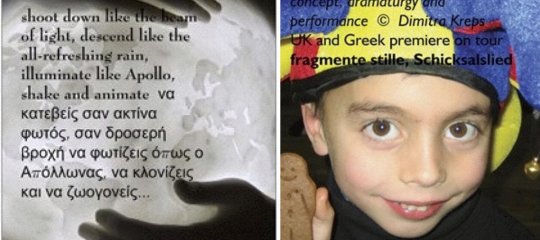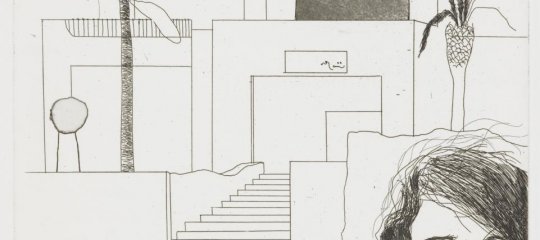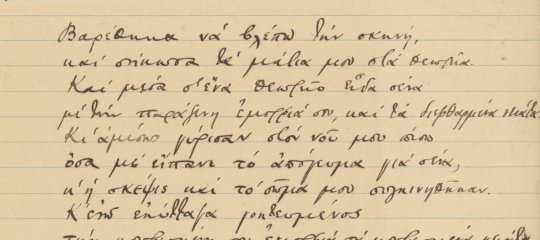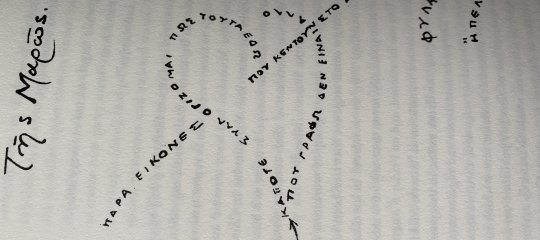Η «Ρουσία» του Καζαντζάκη
Από το 'Έθνος' για την εκδήλωση για τον Ν. Καζαντζάκη που έγινε πρόσφατα στη Μόσχα
25 Μαΐου 2007
ΑΠΟΣΤΟΛΗ: ΔΗΜΗΤΡΑ ΡΟΥΜΠΟΥΛΑ
dirouboula@pegasus.gr
Προφητεία ή ουτοπικό όραμα; Ο όρος «μετακομμουνισμός» πρωτοδιατυπώθηκε το 1927 από τον Νίκο Καζαντζάκη σε ένα 90σέλιδο κείμενο-ερμηνεία της «Ασκητικής». Εδώ ο Κρητικός, έχοντας γνωρίσει τη Ρουσία, όπως την έλεγε, από τέσσερα πολύμηνα ταξίδια του μεταξύ 1919 και 1929, και συνεπαρμένος από το νέο που γεννιέται στη χώρα του Τολστόι, στον οποίο ήθελε να μοιάσει («θέλω να γίνω σαν τον Τολστόι», έλεγε), ανέπτυξε το δικό του όραμα. Πιστεύοντας στη θνητότητα των πολιτισμών, ερμήνευε τον κομμουνισμό σαν την καταστροφή του δυτικού πολιτισμού και τον μετακομμουνισμό σαν το στάδιο της νέας κοινωνίας.
Η μετακομμουνιστική Μόσχα, όχι όπως την εννοούσε όμως εκείνος, συμμετέχει στον εορτασμό για τα 50 χρόνια από τον θάνατό του με το Συνέδριο «Καζαντζάκης και Ρωσία», το οποίο διοργάνωσαν το νεοϊδρυθέν Κέντρο Ελληνικού Πολιτισμού, το Τμήμα Βυζαντινής και Νεοελληνικής Φιλολογίας του Πανεπιστημίου «Λομονόσοφ» και η Διεθνής Εταιρεία Φίλων Ν. Καζαντζάκη - η εκπρόσωπός του Αθηνά Βουγιούκα ανέπτυξε το «κομμουνιστικό πιστεύω» του συγγραφέα. Στόχος η αναθέρμανση του ενδιαφέροντος για το πιο γνωστό λογοτεχνικό όνομα της Ελλάδας, μαζί με τον Καβάφη, στο εξωτερικό, περιλαμβανομένης και της Ρωσίας. Ο Καζαντζάκης ανέπτυξε μια ερωτική σχέση με τη χώρα και αυτή τον αντάμειψε με τη μετάφραση των σημαντικότερων έργων του. «Είναι από τους λίγους Ελληνες πεζογράφους που το έργο του είναι αγαπητό. Κι αυτό φαίνεται από τις πολλές εκδόσεις», ανέφερε οι φοιτήτρια Βλάντα Σούπικοβα.
Η «σοβιετική περίοδος» του Καζαντζάκη (τα τέσσερα ταξίδια) συνέβαλε στην πνευματική και συγγραφική εξέλιξή του. Πίστεψε στην επανάσταση κι έχασε μετά την πίστη του στην ΕΣΣΔ, βλέποντας τη γραφειοκρατία και την προσωπολατρία του Στάλιν, όπως τα ανέπτυξε ο Αλεξέι Σοκολιούκ, καθηγητής ελληνικής γλώσσας στο Πατριαρχείο Μόσχας.
Τις εντυπώσεις του για τη Ρωσία περιέγραψε, στα γαλλικά, στη δεκαετία του 30, στο ελάχιστα γνωστό «Τόντα-Ράμπα» (μεταφράστηκε το 1956 από τον Γ. Μαγκλή). Αυτό το έργο, «ταξιδιωτικό, κοινωνικό, εν μέρει αστυνομικό, χωρίς εξέλιξη ηρώων» είναι μεταβατικό και, κατά τον Ελληνα φιλόλογο στη Φιλολογική Σχολή του Λομονόσοφ Μιχάλη Πάτση, σηματοδοτεί τη στροφή του στο μυθιστόρημα στη δεκαετία του 40.
Τα πρακτικά του ενδιαφέροντος συνεδρίου θα εκδοθούν, μας είπε η Δώρα Γιαννίτση, διευθύντρια του Κέντρου Ελληνικού Πολιτισμού, το οποίο θέτει φιλόδοξους στόχους διάδοσης του ελληνικού πολιτισμού στη Ρωσία.
- Εισέλθετε στο σύστημα για να υποβάλετε σχόλια










